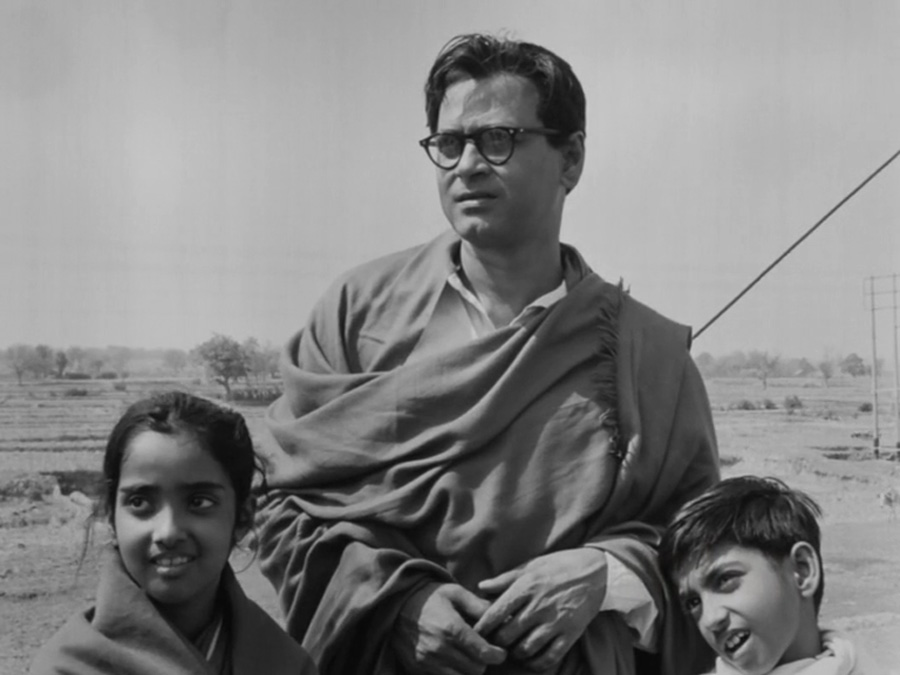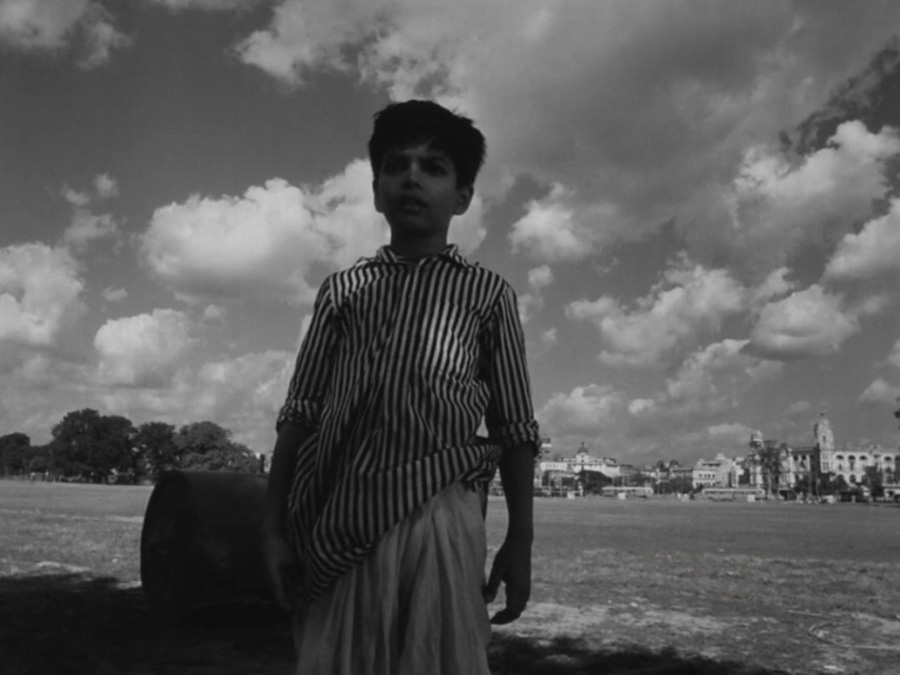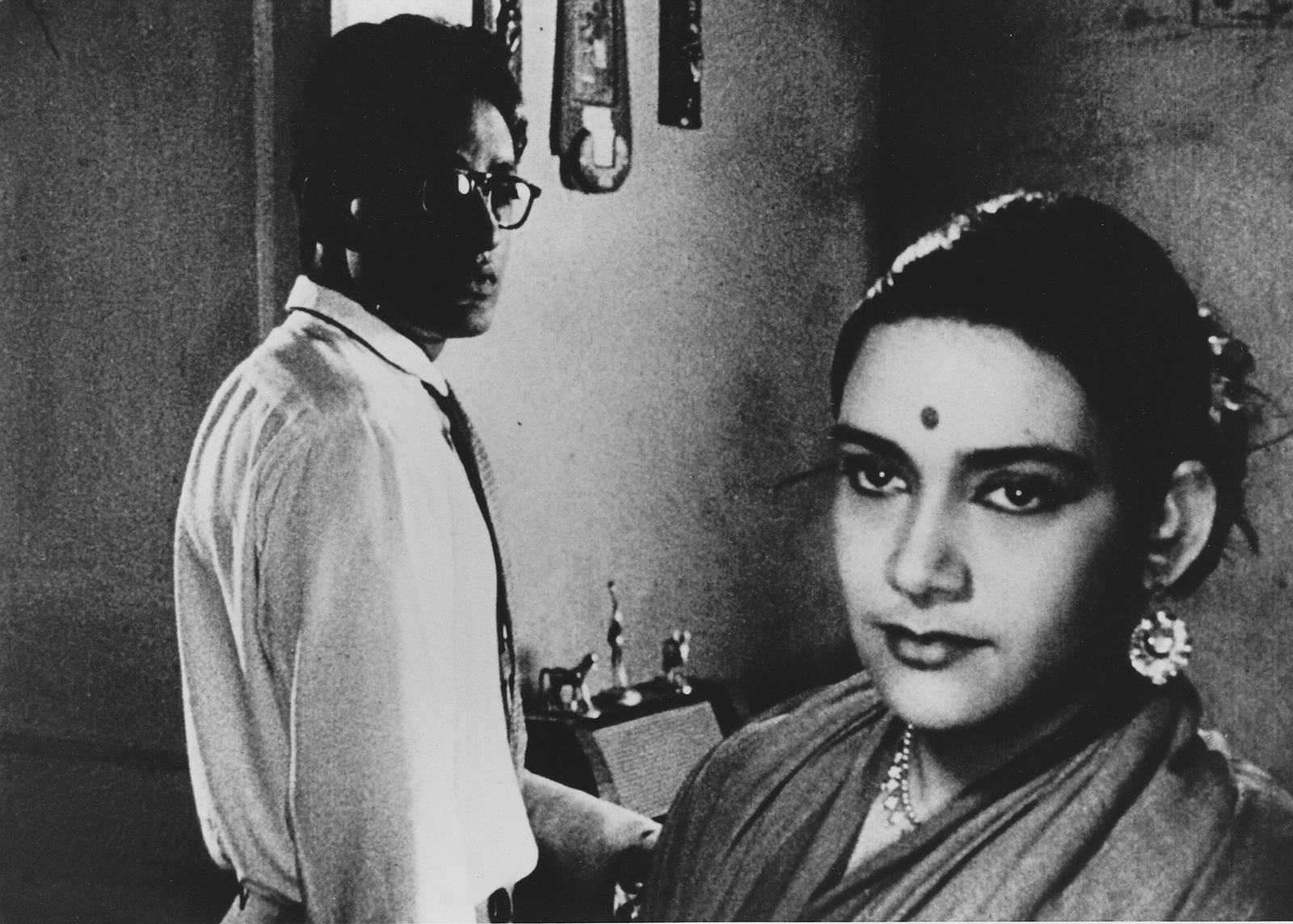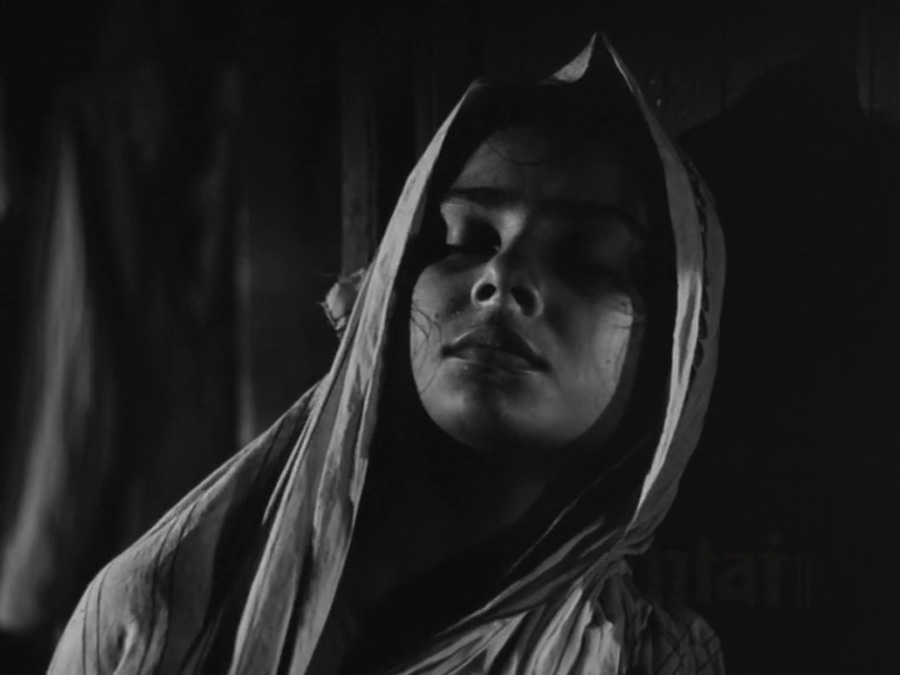In February 1972, three months after the close of East Pakistan’s bloody war of secession, the Indian filmmaker Ritwik Ghatak traveled to Dhaka, capital of the new nation of Bangladesh, as a state guest. It was a kind of homecoming. Born in 1925 in the eastern part of Bengal province, then an undivided state in British-ruled India, Ghatak grew up in the region before he relocated west to Calcutta in the early 1940s. Since 1947, when the province was split in two during Partition, its western half going to India and eastern half to Pakistan, he had not returned east.
As his flight crossed over the River Padma, which runs down Bangladesh, and on whose banks Ghatak had played as a child, the director was so moved that he burst into tears. “I felt that Bengal in plenty and beauty as I knew her years back was still there untransformed,” he recalled years later. Inspired, he returned to Bangladesh the same year to shoot a film, his first in a decade, A River Called Titas. But up close, he saw that the world of his childhood had all but disappeared. “Everything has changed out of recognition—people’s thought, mind, and soul,” he admitted. “They have lost culture.”
The Partition of Bengal looms large over the cinema of Ritwik Ghatak. In eight grave, ravishing films, made in an intermittent career that spanned the first three decades of Indian independence, he returned time and again to the calamitous event, which had deeply scarred him. Sometimes, as in his wayward masterpiece Subarnarekha (1962), he reckoned with the suffering unleashed on the refugees of Partition; in other movies he approached the subject more obliquely. Always he drenched his plots in old Bengali literary and mythic allusions, as well as the region’s classical and folk music, as if expressing a nostalgia for an undivided past.
“Poetry and Partition: The Films of Ritwik Ghatak,” a landmark series at Lincoln Center last fall, brought together seven films, five of them excellent new restorations, allowing us to revisit this neglected, path-breaking artist. Made in response to specific political crises, his movies retain all their urgency four decades on. For the issues Ghatak grappled with—displacement, cultural conflict, state violence—have never really gone away in India.
*
Ritwik Ghatak was born into the Bhadralok (roughly “gentlefolk”), a small class of educated, upper-caste Bengalis who exercise an outsize influence on the region’s politics and culture. His father, a magistrate, was a scholar of Sanskrit; his oldest brother, Manish, was a well-regarded poet. Like a good Bhadralok child, Ghatak grew up immersed in Bengali literature, music, and art—all of which he loved and drew on in his films. (“In his heart and soul, Ritwik was a Bengali film director, a Bengali artist, much more of a Bengali than myself,” Satyajit Ray observed of his friend and sometimes rival.) Yet, for the Bhadralok itself, Ghatak had little admiration. His films expose the arrogance of their casteism.
Ghatak came of age during the 1940s, a decade of seismic change in Bengal. It was a period bookended by a famine created by the Crown in 1943, in which more than three million villagers starved to death, and the horrific riots in 1946 that foreshadowed Partition. These events dispelled any illusions he harbored about the future of India. In all his films, and particularly the Partition Trilogy, the new nation is presented as something fractured, unstable, permeated with violence, and doomed from the outset. The contrast with Ray—see his glowing Apu Trilogy—could not be starker.
Ghatak’s pessimism is already evident in his third film, The Runaway (1959). It is the story of a child who flees his drearyvillage and tyrannical schoolmaster father to wander through Calcutta. The journey begins with a long, early-morning sequence—shots of the Howrah Bridge emerging against a dim sky; bustling streets seen from a low angle—that wonderfully evokes the dreamlike immediacy of childhood. But the plot soon darkens as its hero becomes a kind of street urchin, mingling with migrant workers, beggars, victims of famine, and even thugs who try to kidnap him. “Why is there so much pain here?” he wonders late in the film, before returning home chastened.
Ghatak’s most comprehensive statement about independent India is to be found in the great Partition Trilogy, shot between 1960 and 1962. In these films, he uses the vehicle of a marginal figure, the refugee, to tackle the social ills eating at the heart of Indian society. The Cloud-Capped Star (1960) is a fervid, Dostoyevskian tale of a young woman who allows herself to be exploited by her conservative family. E-Flat (1961) is a parable about the collapse of political idealism. Subarnarekha (1962), perhaps Ghatak’s best-known film, directly confronts caste.
Advertisement
The films are loose allegories of Partition. Each is structured around a romantic separation, with Ghatak suggesting a parallel between the fierce yearning that his young leads feel for each other and a greater desire, unhoused in any single character, for a unified Bengal. In crucial moments the metaphor is made almost explicit. For instance, early in E-Flat the two main characters look across the tributary of the Padma which separates India and what was then East Pakistan. “What do you know about what one feels when one is deprived of one’s homeland?” Bhrighu, the child of refugees, asks Anasuya, whose mother, we learn later, was killed in Partition-related riots. “I know,” she replies. “I know.”
*
“Film is not a form,” Ghatak liked to say. “It has forms.” He himself had little interest in the then-predominant convention of Neorealism, preferring to draw on “lower” modes like the musical and the melodrama (in this, his work resembles Douglas Sirk’s and Rainer Fassbinder’s). His achievement was to turn these genres on their head, channeling their intensity into more critical and surprising directions. Meanwhile, he drew brilliantly on other Indian cultural traditions—music, theater, and mythology—to texture and burnish his plots.
Ghatak found realism woefully inadequate for depicting the brutality of Indian society. Instead, he fashioned a special kind of melodrama to convey how Hinduism deformed the lives of men and (particularly) women, constraining them in fixed social roles, circumscribing their aspirations. In all his films, he works with familiar, even cliché Indian types—spoiled son, vicious mother-in-law, long-suffering daughter, and so forth—only to unsettle them, subjecting his characters to a series of moral and intellectual challenges.
This interrogation plays out most powerfully in Cloud-Capped Star (1960), the story of a refugee family in Calcutta. The film is focused on Neeta, the oldest of four siblings, who single-handedly keeps the family solvent, while everyone else—vain sister, childish brothers, cruel mother, and hapless father—shamelessly sponge off her. As the plot lurches from one crisis to the next, she grows ever more self-effacing, taking on a growing number of responsibilities: an ideal caregiving Hindu daughter. She even rejects the man she loves for fear of the marriage expenses (he then marries her younger sister). It is only at the film’s conclusion, when she is dying from tuberculosis at a sanatorium in the hills, does Neeta realize what she’s allowed to happen to her. Her final words are heartrending. “I want to live,” she cries to her brother. “Tell me just once that I’ll live.” The camera slowly pans around the surrounding valleys, forming a circle, as nature silently looks on.
Cloud-Capped Star also showcases Ghatak’s predilection for mythic allusions. Raiding the cultural treasure chest of Hinduism, both its high Vedic and folk strains, he litters the film with images, songs, and motifs, creating an elaborate web of references, almost another level of storytelling, rather in the manner of T.S. Eliot in The Wasteland. In dramatic moments, he dissolves from a close-up of Neeta’s face to the yagna mandap (or holy pyre) in the house courtyard, suggesting that she is being ritually sacrificed for her family. Early in the film we learn that Neeta was born on Jagadhatri day; as the film scholar Ira Bhaskar has noted, she is modeled on the goddess Jagadhatari, a universal sustainer and avatar of Durga, who “was born out of this smoke [of] the transmutation of human desires.”
Yet the mythic dimension of Ghatak’s characters is not always clarifying (or convincing). Seeta in Subarnarekha is an elusive, exceedingly passive figure who evokes various fantasies in the minds of men. For her brother, she is the chaste, self-sacrificing Durga; to her love interest, she is Krishna’s divine, musical lover, Radha; a passing villager tells Seeta she is the earth-mother Sita of the Ramayana. These are stifling expectations, yet Ghatak offers no critique of them. Likewise, he leaves Seeta’s passivity unquestioned, giving her few desires of her own. In the end, bereft of a larger critical purpose, the myths simply cloak her lack of inner life.
The drama of identity-formation instead unfolds in the language of Ghatak’s cinematography. Forgoing a frontal address, he prefers extremely angled shots, shooting both from above and from far below, so that his figures always appear slightly off kilter, as if larger or smaller than life. To similar effect, he uses wide-angle lenses that emphasize the depth of field, almost embossing people against a backdrop, in the style of mannerist paintings. In crucial moments he uses extreme close-ups to make the actors’ heads seem to float and wobble in a space, underscoring the fractured sense of self. “Ghatak’s cinematic devices… give the figure in space this uneasy location,” the art critic Geeta Kapur has noted, “on the join as it were, between reality and irreality.”
Advertisement
*
Before coming to cinema Ghatak worked with the Indian People’s Theater Association (IPTA), a troupe affiliated with the Communist Party of India. Founded in 1943, the IPTA pioneered a form of street theater that combined elements of folk music and drama with a revolutionary message (imagine a lively, non-doctrinaire variant of Mao’s propaganda outfits). For seven years, he wrote, directed, and acted in IPTA productions, rising to the rank of squad leader. In 1955, he was formally expelled by the CPI for criticizing the party’s increasingly dogmatic cultural agenda.
Ghatak drew on these experiences in E-Flat, a heavily autobiographical film set in the world of Calcutta theater. More generally, the imprint of the IPTA is all over his aesthetic; his dialogue, for instance, has the snap and expository tone of the stage. It is also likely that IPTA gave him the confidence to use music so daringly and copiously in his films. Not only do several of Ghatak’s characters sing—Neeta’s brother is an aspiring musician; Seeta takes vocal lessons; E-Flat it is about a musical theater troupe—but at the outset of each story he establishes a set of musical motifs that recur at key moments throughout, as in a tone poem, often in counterpoint to the drama. “With our common habit of describing cinema as a visual art,” he wrote in his brilliant essay “Sound in Cinema,” “we are tending to forget altogether the importance of the world of sound by itself.”
Part of what attracted Ghatak to IPTA, and later to cinema, was his desire to reach a mass audience. A lifelong Marxist, he wrote polemically about the state of Indian film, often attacking contemporaries, including Ray, for ignoring the country’s countless social problems. Yet at the same time, he warned against all forms of political “sloganeering”; personality was were for him fundamental to art. He spoke of both aspects of the filmmaking process—the task of raising social awareness, and the desire to capture beauty—in combative terms: “A million clenched fists rise to the sky militantly asserting their existence, even as the beams of a fledgling sun fall aslant on a cluster of paddy stalks, touching their edges and turning them into shimmering lines. The film reports from both frontiers, fights both fights.”
Alas, Ghatak’s own military campaigns ended in failure. All his films, with the exception of Cloud-Capped Star, were out-and-out box-office flops, which is unsurprising since little money was put into marketing them (the producers made the self-fulfilling assumption that such challenging art would have few takers). Worse, critics on the left denounced Ghatak for bourgeois pessimism and decadence, charges he repeatedly and vainly denied in print. Early in his career he took to drinking heavily; by the mid-1960s, he was an inveterate alcoholic. His students at the Film and Television Institute of India (FTII), where he served as a vice-principal between 1964 and 1965, remember a brilliant man who was often drunk. “Keep a bottle of liquor in one pocket and your childhood in another,” he advised young directors.
By 1962, Ghatak’s career seemed to have sputtered to a halt after only six films. But in 1972, more than a decade after his last production, he managed to pick himself up to shoot Titas, a stunning historical epic, based on a novel by a lower-caste writer, Adwaita Mallabarman, with funding from a Bangladeshi production house. (Ghatak admitted to an interviewer that he was drunk during most of the process, though he clarified that his “drinking did not interfere with the shooting.”). Two years later, he made his last movie, Reason, Debate, and a Tale, an abrasive, Godard-esque essay-film, in which he plays a washed-out, alcoholic intellectual, a caustically refracted version of himself. In its painfully direct reckoning with social privilege, political failure, and personal shortcoming, there is nothing like it in Indian cinema—or, for that matter, Indian literature. In 1976, a year before the film was officially released, Ghatak, fifty, died of chronic alcoholism.
*
Ghatak’s posthumous reputation has grown steadily in India; today he is a cult figure in art house circles there. What accounts for the change in fortunes? In the first place, history has proved his political instincts right. Ghatak’s fears about the conservative elements within Hinduism; his premonition, in Titas, of environmental disaster; his fixations on homelessness and the metaphor of the refugee: all of this has come to feel awfully resonant in the past few decades. Last August, the BJP government implemented a “Citizen’s Registry” in the northeastern state of Assam, turning some two million people, most of them poor Muslims, stateless overnight, making them refugees in their own country. The plan now is to compile similar registers in the other states. (Last December, responding to massive civil protests against the registries, the BJP’s youth wing shared a montage of clips from the Ghatak’s Partition Trilogy on social media, in a shameless and confused attempt to demonize Muslims.)
Over time, Ghatak’s formal innovations have also come into focus. In his brief career, he opened up film to the possibilities of music, the epic, the essay, and also visual abstraction, blazing a trail that many others have since followed. If an indigenous tradition of Indian cinema can be said to exist, it begins with him. (Ray, for all his varied moods, hardly looked beyond the conventions of European realism.) Finally, Ghatak had a direct influence on Indian cinema at the FTII, where he mentored a group of students who went on to become notable directors in their own right, including Mani Kaul, Kumar Shahani, and John Abraham.
If these filmmakers did not match their guru’s achievements, that is perhaps because they belonged to a more cynical generation, lacking the deep and tortured political idealism, as well as the moral clarity, that allowed Ghatak to respond to the cruelties of Indian social life in the ways that he did. Now the BJP, in its deluded quest to create a Hindu Rashtra, has once and for all exposed the fractures beneath the veneer of India’s democracy. Perhaps that will push filmmakers to a new social reckoning. Until then, Ghatak’s films are a reminder of how badly the country is doing, and what it might have been. “This stuff you write, only sadness, struggles, and tears. I don’t like it,” someone tells Abhiram, a young lower-caste writer, in Subarnarekha. Abhiram smiles, then replies, “But this is what I see all around.”
“Poetry and Partition: The Films of Ritwik Ghatak” was at Film at Lincoln Center from November 1 through 6, 2019.







